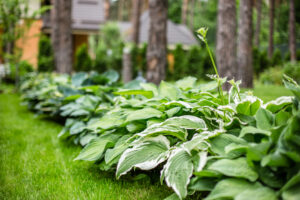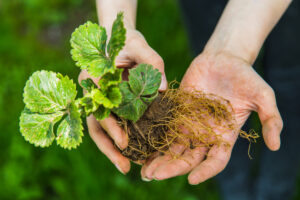Recognizing signs your plant is dying? Here’s what to do!
Remember the time you took a trip to your local nursery? You picked out all of these new plants, spent a small fortune, then came home and spent the rest of the weekend planting them. It took several painstaking hours, but once you were done, your yard looked like something out of a magazine. Fast forward six months later, and all of those plants look like they’re not going to make it another week! Not only are they the same size as when you first bought them, but the leaves look sad, unhealthy, and the plant looks like it may be on its last leg. But how do you know for sure? Plants are finicky little things; any gardener can tell you how sensitive they are, but don’t give up hope. If you’re unsure, here are the tell-tale signs your plant is dying and what you can do to save it.
Signs Your Plant is Dying
There are (what feels like) a million signs your plant is dying, and most of them overlap which can get confusing. However, looking closely at the plant’s roots and leaves will give you better insight to what the plant is suffering from and what it needs to thrive! Be prepared, because it will take some trial and error to figure out exactly what’s wrong. Also, don’t do anything dramatic! Change can shock or further kill your plant, which is the opposite of what you’re trying to do. Instead, make small changes and monitor the plant to see if it’s getting better. If your plant is responding positively, continue nurturing it little by little. Keep in mind, these signs and tips also apply to indoor plants!
Check the Leaves

One of the first signs your plant is dying will be its leaves. Start by checking the leaves for any signs of damage; this is a good starting point and will show you the plant’s current state of health. Thoroughly inspect the tops, bottoms, and intersections of leaves for signs of unwanted pests, fungi, and discoloration. Related: Pests That Might Be Harming Your Houseplants
Symptom: dry leaves
If the leaves of your plant are becoming dry, shriveled, or crispy, there could be several causes. Check each individual leaf and determine if all of them are drying out or just the lower ones. If it’s only the lower leaves, or the older leaves, then your plant might be suffering from a nitrogen deficiency. Luckily, this is an easy fix! Just give your plant a little bit of fertilizer to help it get back to being green and healthy. On the other hand, if the entire plant looks brown and dry — give that poor thing a drink! The entire plant from stem to leaf may be dramatically wilting as a defense mechanism to retain moisture because it’s dehydrated. Water the plant more regularly and see if this helps the leaves become soft, green, and lush again.
Symptom: wilting leaves
Another common cause of wilting is overwatering. Unlike underwatering, plants getting too much water will generally stay rigid at the stems, with only the leaves beginning to droop downward. You’ll also notice yellowing or pale leaves getting worse over time. Lessen the amount of water you’re giving the plant and it should perk back up.
Symptom: leaves falling off
Leaf drop is one of the most difficult signs to decipher in plants. Any condition that’s gone too far will cause the plant to eventually let its leaves go. First, check the soil and see if it’s waterlogged or bone dry. This will let you know if it’s due to under or overwatering. Then, check the plant’s environment. If it’s in a pot, pull the entire plant out and see if the roots have outgrown its container. If roots are coming out of the bottom of the container, are tightly wrapped around the sides, or there are more roots than soil, your plant needs a bigger pot. We recommend upgrading to a pot that is two inches wider in diameter and two inches deeper than its current container. For outdoor plants, see if the plant is overcrowded by other vegetation and needs to be moved to a different spot. Last but not least, check the temperature. If it’s too cold or there’s a draft, your plant might be struggling to stay warm. Move potted plants indoors and cover outdoor plants with a sheet or garden cloche to keep it alive.
Symptom: spots on leaves
Spots that seemingly come from out of nowhere are usually caused by two things — insects or fungus. Gray spotting, especially on young leaves, is powdery mildew. This disease means your plants are getting too much moisture. This is common for plants that are kept in a greenhouse or its been raining too much to their liking. At the first signs of mildew, apply a sulfur-based fungicide to the leaves to prevent the fungus from spreading. Generally, yellow spots on leaves can point to aphids. These little pests are very common and they love to eat the sap from plant leaves. Because they reproduce quickly, you need to act fast. Spray the plants with an insect-killing soap, or go the natural route and buy some live ladybugs — they love to snack on aphids!
Symptom: damaged leaves
There’s no doubt, damaged leaves that look scorched and are kept under direct sun are getting too much light. Research your plant’s recommended sunlight level and replant them accordingly. Leaves that look torn or have holes are probably being eaten by insects. Inspect the plant closely to identify what type of pest is eating the plant. Once you know what you’re dealing with, use an insect-killing soap or try some DIY methods to get rid of them. Read more: What Pest is Snacking on Your Plants?
Symptom: dieback
Another one of the signs your plant is dying is dieback, which is known as a lack of growth in woody plants like shrubs or trees. If you’re seeing this in your plants it’s probably one of three things: a fungus, an insect infestation, or stress due to a harsh winter or drought. The good news is this range of conditions are easy to identify yourself! Depending on what’s causing the issue, a simple DIY fix might work. However, if you’re dealing with a pest infestation, like cankerworms, you might want an expert’s help.
Symptom: change in coloring
Pay close attention to the coloring of the leaves. While it’s normal for some plants to change colors depending on the season, anything sudden or unusual is a sign your plant is dying! Oftentime, yellowing leaves are related to moisture problems. Either too much or too little water can yellow the leaves, so check the soil and go from there. Yellow leaves can also happen if the plant isn’t getting enough light. Again, don’t accidentally shock the plant by moving it to full sun. It’s best to gradually move the plant to a brighter location over time and see how it responds. Brown leaves are one of the most obvious signs your plant is dying. If the browning is only confined to the very tips of the leaves, check if your plant is tropical and needs high humidity. To save the plant, spray it with lukewarm water or move it into a greenhouse.
Check the Roots

The roots can tell you everything you need to know. By examining the roots, you’ll be able to tell if the plant is really on its way out. The good news is, if the plant leaves seem dead but the roots still look healthy, then you have a great chance of reviving it. But if the roots seem dry, brittle, and completely dead, follow some of the tips below to determine if your plant is salvageable.
Symptom: dried roots
Completely dried out roots are usually a clear sign that your plant is dead, or really thirsty. If your plant is potted and the roots are dry, give it a good soak and monitor it. Continue to keep the soil slightly moist and see if your plant begins to return to normal.
Symptom: mushy roots
Roots that are soft, pale, have a musky smell, or look like they’re rotting means they have been sitting in too much water. Replant anything that’s in a pot or remove outdoor plants and add sand or small rocks to the soil to improve drainage. Also, reduce the amount of watering so you’re not accidentally drowning the roots.
Symptom: mushrooms growing
Mushrooms growing near your plants or at the base of trees is both a good and bad sign. The good news is the soil is very healthy and fertile! The bad news is your plants are getting too much moisture. Mushrooms love to grow in damp areas since they’re a fungus. Similar to overwatered roots, adjust the soil’s drainage and remove the mushrooms to prevent them from growing back.
How We Can Help
If you’re noticing key signs your plant is dying and you need guidance on reviving it, contact us! We’ll do everything we can to revive your plants and get them back to being healthy. We’re experts at figuring out exactly what your plant is suffering from as well as determining what it needs to grow. When you do things the Killingsworth Way, you’ll never have to worry about having to look for signs your plant is dying again! Schedule a service with our lawn care professionals.